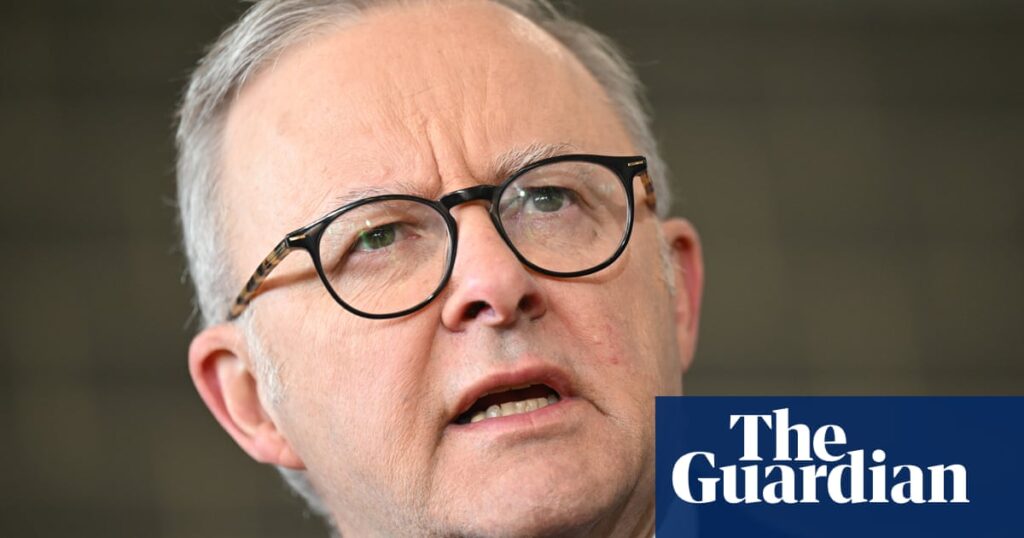Anthony Albanese says trade tariffs placed on Australia by the US Trump administration “should be zero” as leaders around the world prepare for a second “Liberation Day” announcement after a 90-day pause on tariffs.
Relations between the US and Australia have been strained on numerous fronts as the US president, Donald Trump, looks to impose tariffs on global imports and pressures western countries to lift defence spending commitments.
The 90-day pause on a minimum baseline tariff rate of 10% is expected to lift next week and Albanese said Australia has continued to put forward its case that it should be exempt.
“We continue to put our case forward that it shouldn’t be 10,” the prime minister said on Monday. “It should be zero. That is what a reciprocal tariff will be. We have a US free trade agreement, of course, and we’ve put forward very clearly our arguments. We’ll continue to do so.”
The US trade body placed Australia’s subsidised medicine system, meat and fruit industries and refreshed media bargaining code in its crosshairs for higher tariffs before Trump ultimately announced a 10% baseline tariff on goods from Australia.
Separately, Australian steel and aluminium exports to the US face a 25% tariff. Trump has flagged that the US could boost the tariffs to as high as 50%, prompting the ire of Australian ministers who said this was not the “act of a friend”.
Amid the trade dispute, the US administration has urged countries including Australia to significantly raise defence spending to at least 3% of GDP, and launched a snap review of the Aukus deal with the UK and Australia.
The Pentagon announced a 30-day review of the Biden administration pact in early June by the US defense undersecretary Elbridge Colby to determine whether it remained aligned with the president’s “America first” agenda.
Albanese said Australia had advocated for the agreement at “every opportunity” and flagged an upcoming meeting with the UK – part of the two countries’ annual strategic dialogue, Aukmin – as another opportunity to highlight its advantages.
“Aukus benefits three countries: Australia, the UK and the US,” he said. “But it does something more than that as well. It benefits the world because it makes our region and the world more secure because it is such an important agreement going forward,.”
Colby, a critic of the Aukus deal, previously urged Australia to lift its defence spending to 3% of GDP while the US defense secretary, Pete Hegseth, had floated 5% of GDP in response to China’s growing military.
after newsletter promotion
Australia is on track to lift defence spending from about $53bn a year, or about 2% of GDP – to an estimated $100bn, or 2.4% of GDP, by 2033-34.
On Monday Albanese reiterated that there was no plan to increase defence spending, when asked whether it could increase next April with the release of the national defence strategy.
“Fifty-seven billion dollars isn’t nothing … what we want to do is to use defence procurement, not just to assist in the defence of Australia, but also to be a facilitator of that advanced manufacturing,” he said.
The foreign affairs minister, Penny Wong, visits Washington DC this week to see US, Japanese and Indian counterparts at a meeting of the Quad.
The finance minister, Katy Gallagher, told the Today show she had “no doubt” defence cooperation between the four countries would be raised.


